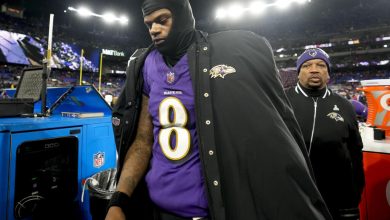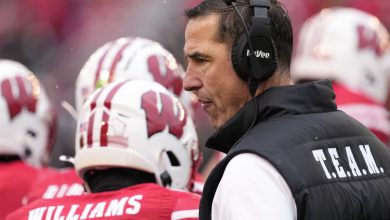Five Vols Come Together to Beat Bonnies in the Ninth No-Hitter in Program History

In a memorable moment that will be etched in Tennessee Volunteers baseball history, five pitchers combined to throw the ninth no-hitter in the program’s storied history, a thrilling feat that stunned fans and solidified the team’s prowess on the mound. The game, which took place against the St. Bonaventure Bonnies, showcased the collective power and depth of the Vols’ pitching staff. In this analysis, we’ll break down the significance of the no-hitter, the key moments of the game, the performances of the five pitchers, and what this accomplishment means for the team as a whole.
The Context: A Team in Transition
Before diving into the specifics of the no-hitter, it’s important to understand the context in which the Tennessee Volunteers baseball team found themselves at the time. Under head coach Tony Vitello, Tennessee has become a powerhouse in college baseball, with a consistently strong roster, especially on the pitching mound. Over the years, Vitello has developed a reputation for cultivating both offensive firepower and dominant pitching, making the Vols one of the top teams in the Southeastern Conference (SEC).
However, 2025 had been a season marked by questions in certain areas of the team. While the offense was always expected to produce, the Vols had been relying on a mix of veteran and young arms to hold down the pitching staff. The key to their success, especially against teams that could hit for power, was going to be their ability to get consistent and dominant performances on the mound.
The game against the St. Bonaventure Bonnies was a perfect example of what Tennessee’s pitching staff could do when firing on all cylinders. While St. Bonaventure wasn’t known for having one of the most potent offenses in college baseball, the Vols’ staff did not take that for granted. The no-hitter, which was carried out by five different pitchers, was a testament to the team’s depth and the effectiveness of their pitching strategy.
The Setup: A Collective Effort
A no-hitter in baseball is a rare and impressive achievement, but a no-hitter involving multiple pitchers is even more remarkable. The game against St. Bonaventure featured five different pitchers—each contributing a different piece to the puzzle—that resulted in a combined no-hitter. This accomplishment not only highlights the individual talent of the five pitchers but also reflects the strategic depth and the bullpen’s ability to execute in high-pressure situations.
The Five Pitchers: A Masterclass in Teamwork
The Vols’ pitching staff that day was led by a mix of veterans and rising stars who complemented each other perfectly. For a no-hitter to be thrown by multiple pitchers, they must have excellent coordination and communication throughout the game. Every pitcher must trust their teammates and know when to step up in critical moments. Here’s a look at the five pitchers who combined to create the magic on the mound.
1. Starting Pitcher: Right-Hander Jake Rucker
The game began with Jake Rucker, a key member of the Vols’ pitching rotation. Rucker, a right-handed pitcher, has shown considerable promise over the course of his career. He entered this game with a clear focus: get the team off to a strong start and set the tone for the rest of the pitching staff.
Rucker’s first inning was nothing short of dominant. He mixed his pitches well, using a combination of fastballs, sliders, and changeups to keep the Bonnies’ hitters off-balance. His ability to locate his pitches, especially with two strikes, allowed him to rack up quick outs. By the time Rucker exited the game after his three innings of work, he had struck out four batters and had not allowed a hit.
Rucker’s fastball sat in the low 90s and his slider had just enough movement to fool St. Bonaventure’s hitters, making him the perfect starting pitcher for such an endeavor. His performance provided the perfect foundation for what was to come, as he handed the ball over to the bullpen with the no-hitter intact.
2. Relief Pitcher: Left-Hander Ben Murphy
Ben Murphy, a left-handed reliever, was the next man up in what turned into a bullpen by committee situation. Murphy has been an invaluable asset to the Vols’ pitching staff, especially against left-handed hitters, and he proved to be crucial in maintaining the no-hitter. Coming in for the fourth inning, Murphy faced a team that had yet to get on base and did not want to be the one to break up the no-hit bid.
Murphy’s job was to continue the momentum Rucker had built and to keep the Bonnies’ hitters at bay. He did so effortlessly, using his lethal changeup and breaking ball to dominate the bottom of the order. His performance was a clear demonstration of his ability to come in cold and perform under pressure. Murphy worked two scoreless innings, struck out two batters, and continued to thwart St. Bonaventure’s efforts to make any solid contact with the ball.
3. Relief Pitcher: Right-Hander Tommy Green
After Murphy, the Vols turned to Tommy Green, a right-handed pitcher with the ability to overpower hitters with a fastball that can reach the mid-90s. Green entered the game in the sixth inning, and his task was clear: keep the no-hitter alive and continue to work through the St. Bonaventure lineup.
Green’s raw velocity was a key factor in his dominance during his inning of work. His fastball consistently overpowered St. Bonaventure’s batters, and his sharp breaking ball kept them off balance. Green’s ability to generate swings and misses was vital in maintaining the no-hitter, and he struck out two batters while allowing no hits.
Green’s performance in this middle stretch of the game allowed the Vols to take another step closer to the historic feat, and the Bonnies’ offense began to feel the pressure mounting. The strategic use of Green’s high velocity and elite breaking stuff helped him dominate St. Bonaventure and ensured the no-hitter remained intact heading into the later innings.
4. Relief Pitcher: Right-Hander Drew Dickinson
In the eighth inning, Tennessee called on Drew Dickinson, another reliable arm from the bullpen. Dickinson had been effective for the Vols throughout the season and had been used in high-leverage situations before. The pressure was on, but Dickinson rose to the occasion.
Dickinson’s command of his fastball and slider was exceptional, and he kept St. Bonaventure guessing. By mixing his pitches well and locating them in the lower part of the strike zone, Dickinson set down the Bonnies in order. He pitched with confidence, and his performance was a key moment in keeping the no-hitter intact going into the final frame.
His performance exemplified Tennessee’s pitching depth and their ability to use different pitchers with different styles to execute a team-based no-hitter. With one final inning remaining, the Vols were one step closer to making history.
5. Closing Pitcher: Right-Hander Ryan O’Rourke
Finally, the game was handed over to Ryan O’Rourke, the closer for the Vols, who had been lights out all season. O’Rourke entered the game in the ninth inning with history on the line, and he was determined to close out the no-hitter.
O’Rourke was electric in the final frame, striking out the first two batters he faced with fastballs that reached 95 mph. With the final batter up, O’Rourke kept his composure, executing a perfect slider to induce a ground ball to second base. The play was made with ease, and the no-hitter was officially complete.
The Impact of the No-Hitter
The collective effort to throw a no-hitter was a defining moment for the Vols’ pitching staff, and it was a testament to the depth and talent that Tony Vitello has cultivated within the program. While the no-hitter was a standout achievement, it also highlighted the team’s ability to come together and execute at the highest level, something that would be critical for their success throughout the rest of the season.
For Vitello, this was yet another example of how his pitching staff was able to work together to achieve greatness. The Vols have long been known for their offensive firepower, but the no-hitter proved that their pitching staff was just as capable of stepping up and delivering in key moments.
For the players involved, this no-hitter will be a moment they will remember for the rest of their careers. Each pitcher had a role to play, and each one executed their task with precision, making history in the process. The no-hitter was a true team effort, a moment of unity and excellence that every player on the roster contributed to in some way.
Looking Ahead: What This Means for Tennessee Baseball
The no-hitter was a huge accomplishment, but for the Tennessee Volunteers, it’s only one step in their journey. With SEC play on the horizon and March Madness looming, the Vols will need to build on this momentum and continue to develop their pitching staff and offensive attack. If the team can maintain the level of performance they showed in this game, they will undoubtedly be a force to be reckoned with in the postseason.
In the grand scheme of things, this no-hitter is more than just a historical moment. It’s a reminder of the potential of Tennessee baseball and a statement to the rest of the SEC that the Vols are ready to compete at the highest level. With their pitching staff clicking, Tennessee will be a team to watch as the season progresses, and this no-hitter will be a defining moment in their quest for success.









